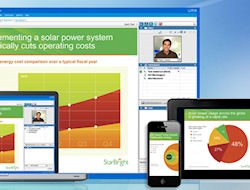A guest post from our friends at System Concepts about the pro’s and con’s of remote research, including an approach for its application.
We all know that involving real users in the design process is the best way to identify usability problems and highlight areas and means for improvement; thereby improving the user experience.
Remote usability testing provides a time-and-cost-effective way of achieving this with a broad sample of users.
What does remote testing involve?
A remote usability testing session usually follows a similar structure to a face-to-face testing session. The only real difference is that the session moderator and participant are in different locations, so the session is conducted via a computer or telephone.

Ideally, we ask the participant to log into an online meeting on their computer. This allows mutual screen-sharing, so that we can see what they are doing and so that we can take control of the mouse to draw their attention to specific areas of interest on-screen.
Audio capability allows us to maintain a conversation with the participant, so they can explain what they’re doing and so we can ask them questions; just as we would if we were in the room with them. We can also pass on links and written materials via an integral chat feature, or email materials in advance. This might include the research consent form or a list of questions or materials to look through before their session.
What are the benefits of remote testing?
Remote testing has a number of benefits over face-to-face testing:
- Participants can be recruited from a wider geographical area; across the UK or more globally.
- There are no travel costs for participants or moderators.
- Projects can be turned around quicker, as data collection takes less time.
- Up to 16 observers can view the sessions simultaneously and live from a location of their choice.
What are the limitations of remote testing?
Although remote testing can be a very useful tool, it cannot replace the rich feedback we receive from face-to-face testing. It is important to remember its limitations:
- Testing is reliant on participants having a fast internet connection, microphone and speakers as well as being competent enough to install and set up the necessary software. This rules out certain user populations, meaning a representative sample is not always possible.
- It is difficult to include participants with certain disabilities, such as screen reader users.
- Remote testing is not ideal for testing where audio is involved, because it can be difficult for the moderator and participant to chat over the sound of what’s being tested. This means that discussions have to wait or are stunted.
- It can be more difficult to build up a rapport with participants and hold their attention, particularly children.
- However, with good facilitation skills and an introductory phone call, our skilled consultants make this possible.
- Careful planning is required to ensure that participant consent forms, certain test materials and incentives are delivered to participants in a timely manner.
Examples of our work in this area
We have a wealth of experience conducting remote testing sessions via telephone and WebEx connections to test prototypes and website and gather insights.

We recently conducted some remote testing to gather insights and inspiration from 24 participants based in the UK, Germany and Italy for a mobile network provider.
In preparation for the interview, participants completed a pre-session task. For this, we asked them to take photos of certain items within their home that were relevant to the research, and then think about their interaction with these items. Participants emailed their responses to the researcher in advance of their interview.
We then held a 40 minute telephone interview with each participant to explore their interactions further and identify key tasks and pain points, as well as any opportunities for future designs of the item. The interviews were then analysed in the same way as a face-to-face usability testing session.
With strict budget constraints and a broad sample required across three countries, remote usability testing provided cost-effective and useful feedback to our client.
This post originally appeared on the System Concepts website.
